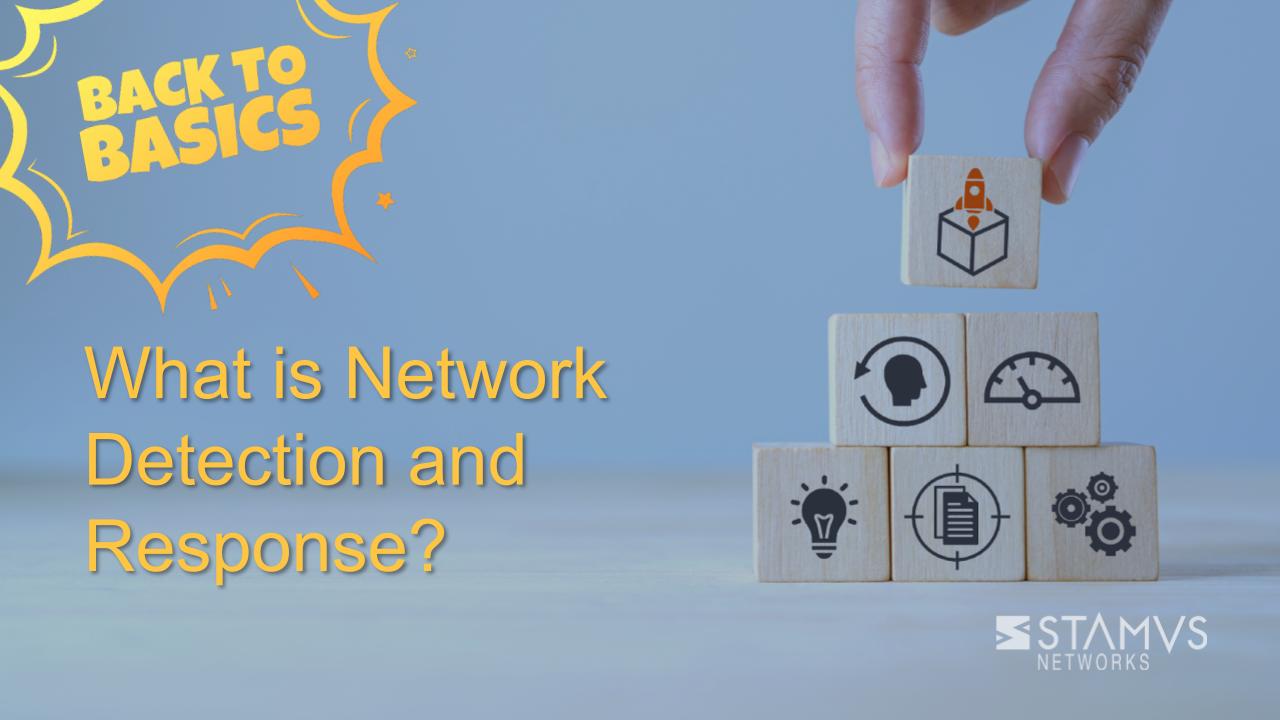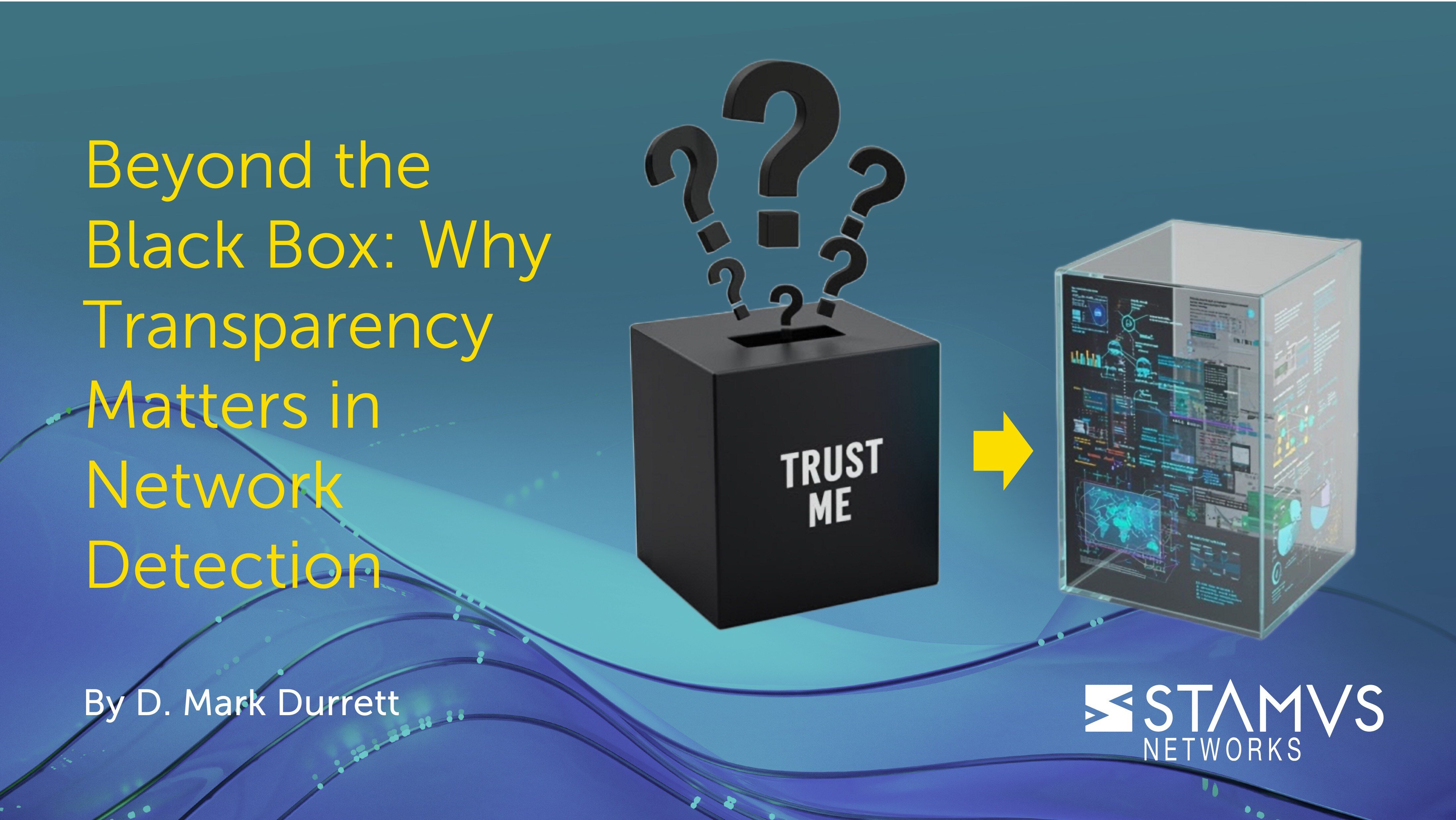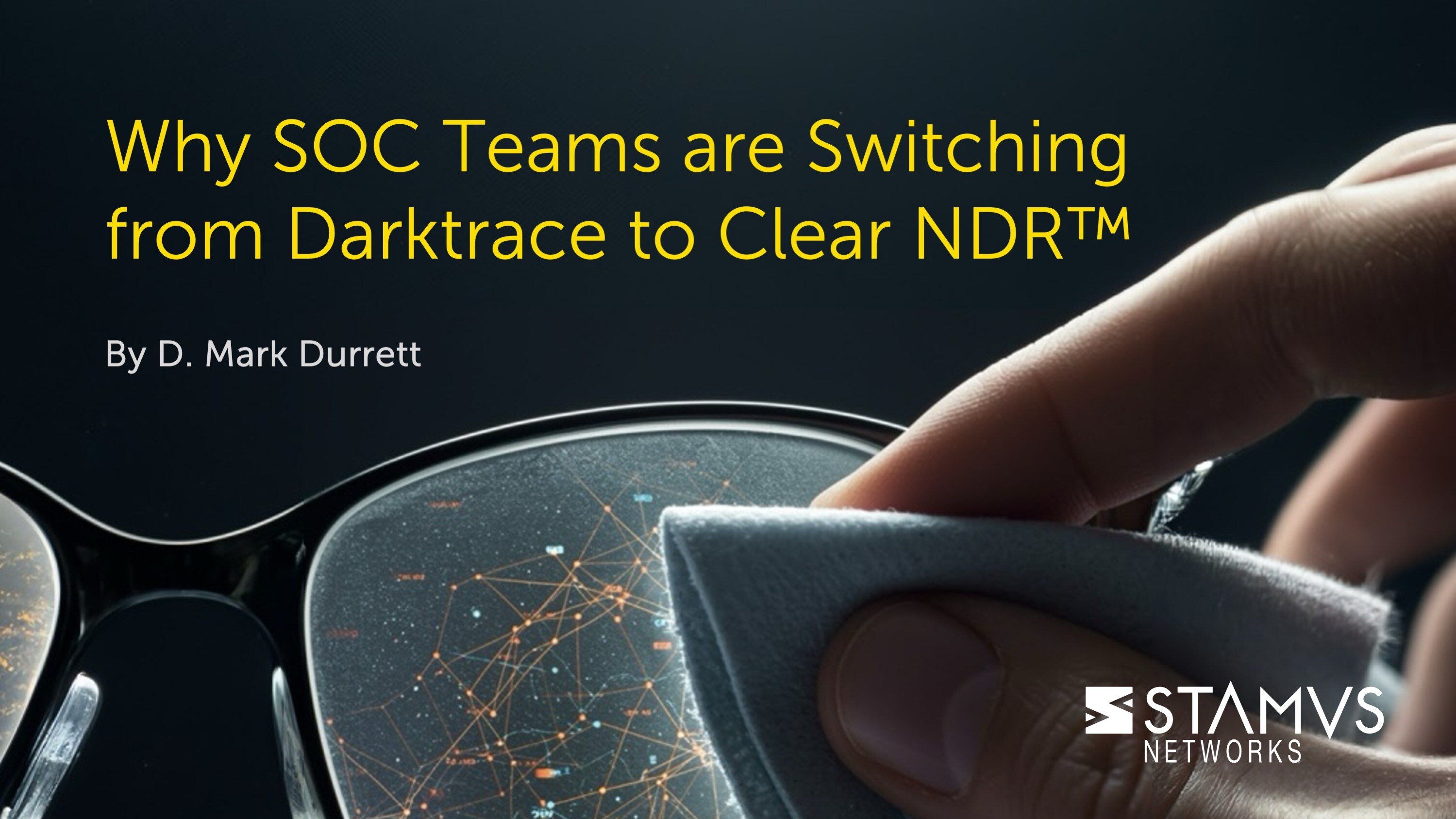Network detection and response (NDR) has been steadily increasing in popularity as organizations realize its effectiveness in detecting and responding to cyber threats at the network level. Many organizations seeking to evaluate NDR look to industry analysts like Gartner for recommendations. While Gartner does have great resources on NDR, they unfortunately have not yet released a network detection and response magic quadrant. With that in mind, organizations must seek alternative ways of evaluating NDR and determining its efficacy, such as the "2024 Market Guide for Network Detection and Response" which is available to download for free from Stamus Networks.
If you are in the early stages of learning about NDR, then this blog post will cover some of the basics.
What is network detection and response?
Network detection and response (NDR) is a cybersecurity system that continuously monitors and analyzes an organization’s network traffic to detect and address potential threats. NDR solutions surpass conventional or outdated network security methods by monitoring traffic in near-real time.
These solutions use sophisticated detection mechanisms, including artificial intelligence and machine learning, to identify and address potential security incidents. The main objective of NDR is to bolster the organization's ability to both identify and counter threats, thereby mitigating the risk of data breaches or unauthorized access.
What does network detection and response do?
Network detection and response systems have many functions, but each function serves the greater purpose of maximizing visibility to detect and respond to potential threats while providing insights into network infrastructure. Generally, every NDR function supports one of the following main NDR use cases:
- 1. Automated Threat Detection - Advanced algorithms and machine learning automatically identify potential threats within network traffic. Continuous monitoring and network data analysis enable network detection and response (NDR) solutions to detect anomalous behaviors, malicious patterns, and IOCs in near real-time. This enables security teams to perform the following use-case – incident response.
- 2. Incident Response - By capturing detailed network activity logs and traffic data, NDR empowers security teams to reconstruct the sequence of events, investigate the root cause, and understand the extent of the breach. This enhanced visibility allows for faster response times, enabling organizations to contain and mitigate the impact of security incidents efficiently.
- 3. Proactive Threat Hunting - Security analysts can use advanced search capabilities, behavioral analytics, and threat intelligence to actively explore network data, identify hidden threats, and uncover emerging attack patterns. Proactive threat hunting helps organizations stay ahead of threat actors, detecting and neutralizing threats before they cause harm.
- 4. Remediation - Once a threat is identified, a network detection and response (NDR) system can automatically trigger a response action through integrations with other systems like EDR to block suspicious IP addresses, isolate compromised end-user devices, or implement access control policies. These actions help contain the threat, prevent lateral movement, and minimize the impact of a security incident.
Why is network detection and response important?
Network detection and response products are important because they give organizations a detailed look into network infrastructure, which enables early threat detection, rapid incident response, and comprehensive threat analysis. Let’s take a closer look at these three benefits of increased network visibility:
- Early Threat Detection: By maximizing network visibility, organizations can identify malicious activities and indicators of compromise (IOCs) at their earliest stages. Network traffic holds essential information to spot abnormal behaviors, suspicious communication patterns, and unauthorized activity. This early detection empowers security teams to respond promptly and mitigate threats before they cause significant damage or compromise sensitive data.
- Rapid Incident Response: Increased network visibility enables real-time monitoring and analysis of network traffic, allowing organizations to respond swiftly to security incidents. Clear visibility into network activities helps security teams identify the incident's scope, trace its origin, and take immediate action to contain and remediate the threat. Timely incident response minimizes potential damage, reduces downtime, and aids in quickly restoring normal operations.
- Comprehensive Threat Analysis: Expanded network visibility facilitates in-depth analysis of network traffic, aiding organizations in understanding the context, nature, and scope of potential threat proliferation. By scrutinizing network communication patterns, traffic flows, and data exchanges, security teams can identify malicious behavior, detect malware infections, unveil hidden threats, and gain valuable insights into attackers' tactics, techniques, and procedures (TTPs). This comprehensive threat analysis empowers security teams to develop effective countermeasures and enhance overall defenses.
What are the benefits of network detection and response?
Every organization experiences different benefits when they use network detection and response software. Ultimately, it comes down to which NDR they choose to deploy and how that NDR operates in their unique environment. However, organizations that deploy NDR often experience the following:
- NDR Fills Gaps Left by EDR and Similar Tools:
EDR systems require installing an agent on every device, creating coverage gaps in certain environments like those with IoT devices, many medical facilities, or organizations that allow employees to use their personal devices for work. NDR — operating without agents — provides real-time monitoring for optimal visibility in any environment. - NDR Secures Cloud and Hybrid Environments:
As cloud and hybrid setups become more common, the need for security systems that can monitor these environments is increasing. NDR utilizes network telemetry data — a valuable source for monitoring, analysis, threat detection, and investigation — to monitor cloud assets that use the network for communication. - NDR Benefits Both Security and IT Teams:
Beyond its security advantages, NDR is beneficial for IT teams. It offers heightened visibility into the network, assisting in diagnosing network issues and optimizing overall network performance. - NDR Empowers Zero-Trust Security:
The widely adopted zero-trust security model requires continuous verification of users, devices, and applications on the network. Achieving this verification is challenging without comprehensive visibility into the network, a task easily accomplished with NDR.
How should I evaluate NDR solutions?
There are 6 key requirements that organizations should consider when evaluating modern NDR solutions. If an NDR does not satisfy these requirements, then your organization should look elsewhere:
- Sophisticated detection
- Transparent, explainable results with evidence
- High-fidelity response triggers
- Guided threat hunting
- Openness and extensibility
- Complete data sovereignty
The Stamus Security Platform (SSP) satisfies all 6 requirements of a mature NDR and is the world’s most advanced Suricata-based network detection and response system. We combine the very best of machine learning, signature-based, IoC matching, and algorithmic threat detection into a single platform that identifies both known and unknown threats lurking on your network.
To learn more about SSP, please view the following resources:
- Stamus Security Platform Data Sheet
- Real World Success Stories: In the Trenches with NDR
- Stamus Security Platform Overview
To be notified of new blog posts and other news, make sure to subscribe to the Stamus Networks blog and the Stamus Spotlight Monthly Newsletter, follow us on Twitter, LinkedIn, and Facebook, or join our Discord.






